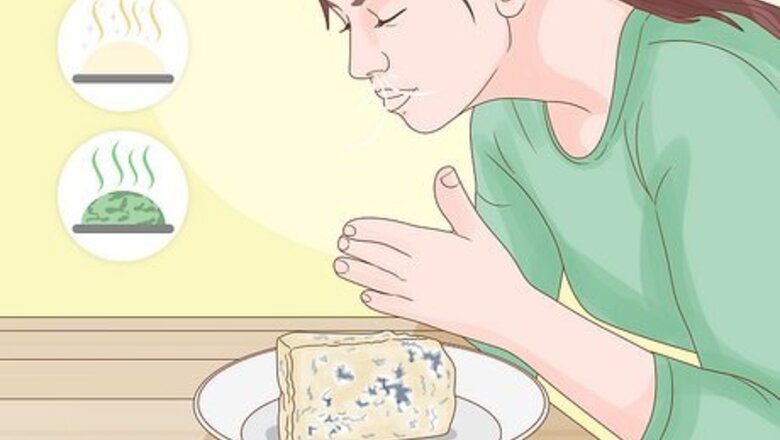
views
Examining the Cheese
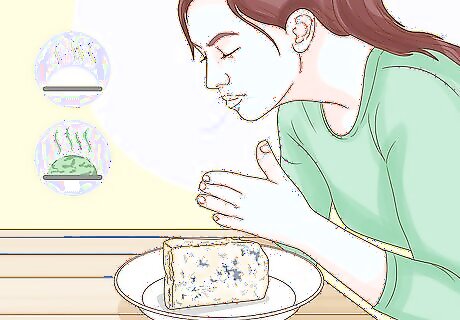
Smell the cheese. The best way to tell if your blue cheese has spoiled is to smell it. Fresh blue cheese has a strong scent, but it changes as it starts to go bad. Give the cheese a sniff, and if it has an ammonia-like smell, it is probably spoiled. It's a good idea to give blue cheese a smell when you've just brought it home. That way, you'll know what it smells like when it's fresh and be better able to detect when the scent begins to change.

Consider the color(s). Fresh blue cheese already has mold in it, which is typically blue or green in color. However, you want to pay attention to the color of the creamy part of the cheese. It's normally a white, beige, or yellow shade. If you notice that it's started to turn pink, brown, or green, your blue cheese has likely spoiled. Just as with the scent of the cheese, make sure to note the color of your blue cheese when it's fresh so it's easier to spot changes if it goes bad. In addition to color changes, study the cheese to see if its surface appears slimy or fuzzy, and discard if you notice changes in texture.

Taste the cheese. If your blue cheese still smells the same and hasn't changed in color, you can usually tell if it's gone bad by giving it a taste. While fresh blue cheese has a strong, sharp taste, old cheese becomes especially biting when it starts to spoil. If you taste a bit of the blue cheese and it's too strong to enjoy, you should throw it away. In most cases, eating a small bit of spoiled blue cheese isn't going to make you sick, so tasting it isn't dangerous.
Following Expiration Dates
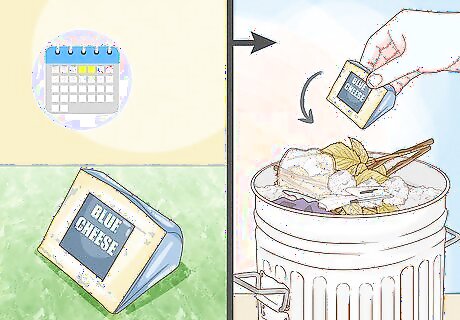
Toss unrefrigerated cheese after two days. Blue cheese should be refrigerated to keep it fresh, so if you leave it out on your counter, it's going to spoil more quickly. In most cases, you'll notice that it's gone bad after just a few days. If you're accidentally left blue cheese out, it's best to throw it away if it's been two days or more.

Throw away refrigerated cheese after three to four weeks. When blue cheese is kept in the refrigerator, it can last quite a while. Check the expiration date on your cheese -- in most cases, it will remain good for one to two weeks past the date. That typically means it will last in fridge for three to four weeks. To keep your blue cheese fresh as long as possible, make sure your refrigerator temperature isn't set above 40 degrees.
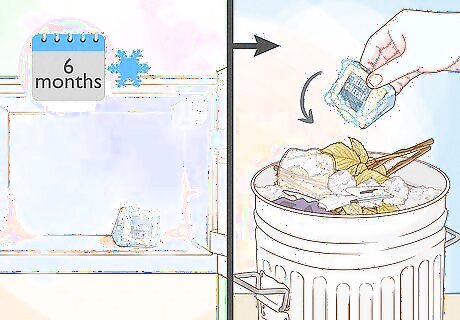
Get rid of frozen cheese after six months. If blue cheese is kept in the freezer at 0 degrees, it can last indefinitely, which means you can freeze excess cheese that you don't plan on using within the month to prevent it from spoiling. However, for best taste and texture, you shouldn't keep it frozen for more than half a year. Keep in mind that the taste and texture of blue cheese can change slightly when it's thawed. It loses some of its sharp flavor and usually crumbles more easily.
Storing Blue Cheese

Cut cheese for freezing. If you want to store your blue cheese in the freezer, you must cut it into pieces that are no larger than a ½ pound each. For crumbled blue cheese, divide it into portions that are a similar weight. Use a food scale to weight each slice or portion before you prepare it for storage. You can freeze blue cheese that you've already opened or served. Just make sure to cut the remaining cheese wedge or divide crumbles into the ½ pound portions as directed.
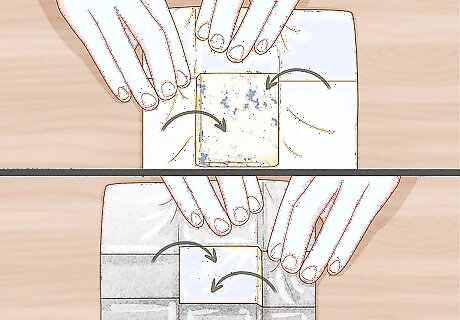
Double wrap the cheese. Whether you plan to store blue cheese in the refrigerator or freezer, it needs to be wrapped properly to ensure that it will stay fresh as long as possible. First, wrap the cheese in wax or parchment paper. Next, place plastic wrap or foil over the paper to ensure that it won't dry out. If you are freezing the cheese, place the double wrapped piece into a plastic freezer bag to protect it from freezer burn. If you're concerned about the cheese picking up the scent or flavors of other items inside your refrigerator, you may want to place it in an airtight container after it's been wrapped for additional protection.
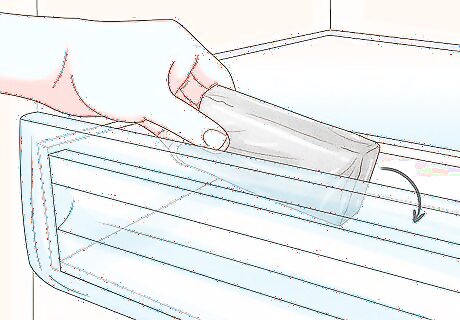
Store on bottom shelf in the refrigerator. The colder that blue cheese, the longer it will stay fresh. Because the lower section of the fridge is usually the coldest, you want to make sure to keep it in on the bottom shelf to preserve for as long as possible. If your refrigerator has drawers at the bottom, that's an ideal place to store blue cheese because they likely won't be opened every time you look in the fridge, so the temperature will remain stable.














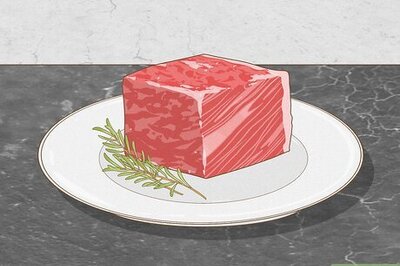

Comments
0 comment